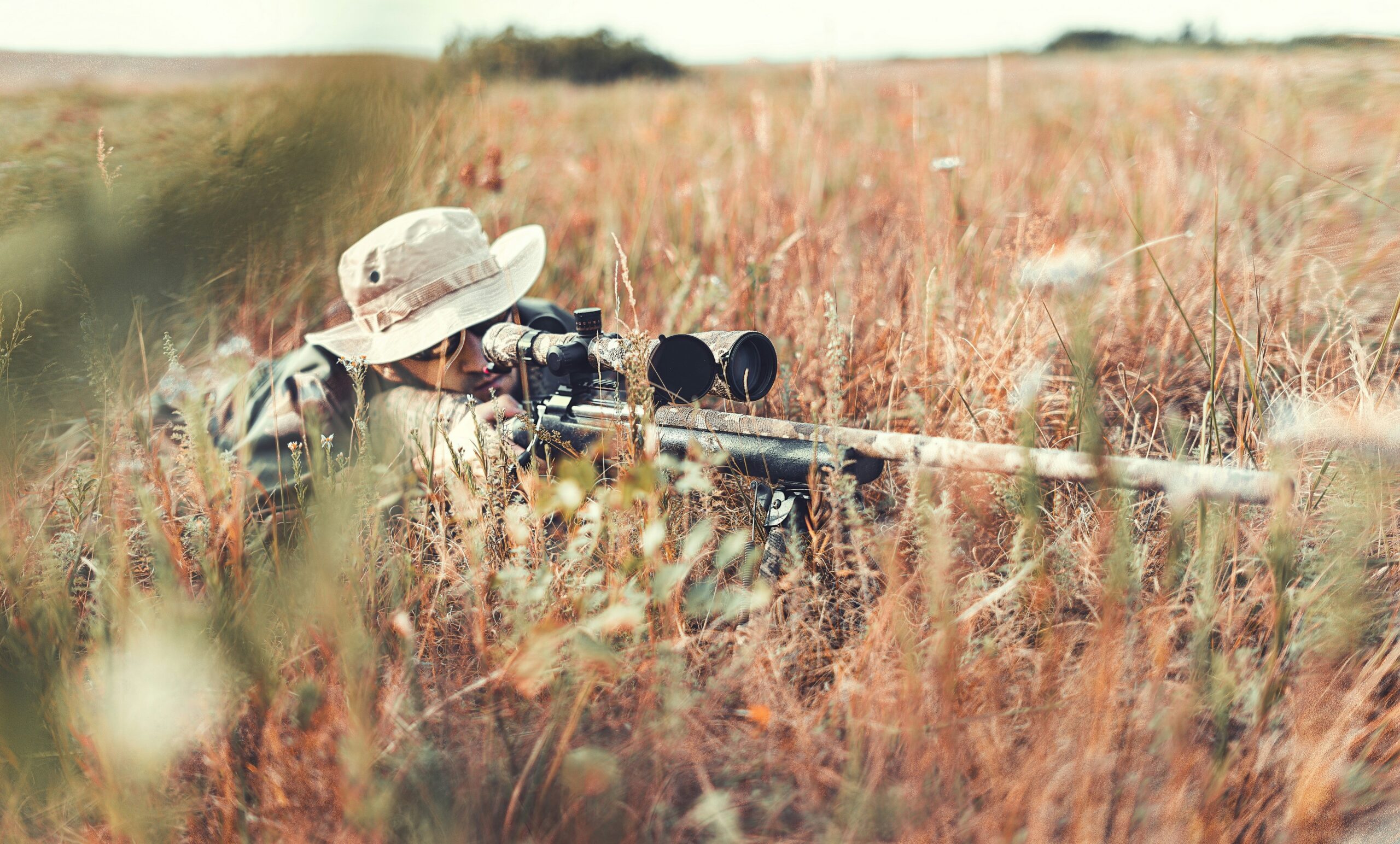Imagine being able to see objects that are miles away with just a simple pair of binoculars. It may seem like a dream, but with 12×50 binoculars, this becomes a reality. These powerful optical devices have the ability to magnify objects up to 12 times their actual size, while the 50mm objective lens allows for exceptional light gathering, resulting in a clear and detailed view. Whether you’re an avid birdwatcher, a nature enthusiast, or a sports spectator, these binoculars will unlock a whole new world of observation and exploration for you. So, how far can 12×50 binoculars see? Let’s find out.

Understanding 12×50 Binocular Specifications
Description of 12×50 binoculars
When it comes to binocular specifications, the numbers used to describe them may seem confusing at first. However, they actually provide important information about the capabilities and features of the binoculars. In the case of 12×50 binoculars, the first number (12x) refers to the magnification power, while the second number (50) indicates the objective lens diameter. Understanding these specifications is essential for choosing the right binoculars for your needs and maximizing their performance.
Explanation of the 12x magnification
The magnification power, represented by the first number in the binocular specifications, determines how much closer the viewed object will appear compared to the naked eye. In the case of 12×50 binoculars, the object will appear 12 times closer than it would be when viewed with the naked eye. This higher magnification can be advantageous for observing distant objects in detail, such as wildlife, sporting events, or scenic landscapes. However, it’s important to note that higher magnification also comes with certain trade-offs, such as a narrower field of view and increased shakiness.
Explanation of the 50mm objective diameter
The second number in the binocular specifications, in this case, 50, indicates the diameter of the objective lens. The objective lens is located at the end of the binoculars farthest from the user’s eyes, facing the object being observed. The larger the objective lens diameter, the more light the binoculars can gather, resulting in brighter and clearer images. A 50mm objective diameter is considered to be on the larger side, making 12×50 binoculars well-suited for low-light conditions, such as early morning or late evening observations.
Determinants of Binocular Range
Exploring the impact of magnification on range
The magnification power of binoculars plays a crucial role in determining the range at which objects can be clearly observed. With 12x magnification, 12×50 binoculars allow for long-range viewing, making them suitable for observing distant objects such as birds, landmarks, or celestial bodies. However, it’s important to keep in mind that higher magnification can also amplify hand tremors, which may result in a shakier image. To minimize this, using a tripod or image stabilization feature can be helpful.
Role of lens size in determining range
The size of the objective lens, represented by the second number in binocular specifications, also influences the range at which objects can be viewed. In the case of 12×50 binoculars, the 50mm objective diameter allows for better light gathering, enabling clear observations even in low-light conditions. This larger lens size enhances the range of the binoculars by providing brighter images, making them ideal for activities such as stargazing or wildlife observation during dawn or dusk.
Importance of optical quality and design in range determination
While magnification and lens size are important factors in determining binocular range, the overall optical quality and design of the binoculars also play a significant role. Factors such as the glass quality, lens coatings, and the precision of the optics impact the clarity, brightness, and sharpness of the image. High-quality binoculars, like 12×50 models from reputable brands, are often designed with advanced technologies and superior optical components to maximize the range and provide a satisfying viewing experience.
Calculating Maximum Viewing Distance of 12×50 Binoculars
Techniques for estimating viewing distance
Calculating the maximum viewing distance of binoculars involves considering various factors, such as the object’s size, lighting conditions, atmospheric conditions, and the viewer’s visual acuity. One common technique for estimating the viewing distance is to use the “1,000-yard rule.” This rule suggests that binoculars with a magnification power of X can observe objects as if they were 1,000 yards away. Applying this rule to our 12×50 binoculars, we can estimate that they have a maximum viewing distance of approximately 1,200 yards (12 times the 100-yard rule).
Applying the techniques to 12×50 binoculars
By applying the 1,000-yard rule, we can estimate that 12×50 binoculars have a maximum viewing distance of around 1,200 yards. However, it’s important to remember that this estimation assumes optimal observing conditions, which may not always be the case. Factors such as atmospheric conditions, lighting, and the size and color of the observed object can affect the actual range of the binoculars. It’s always advisable to consider these factors and manage your expectations accordingly when using 12×50 binoculars.
Benchmark distances for 12×50 binoculars
While the 1,200-yard estimation provides a general idea of the maximum viewing distance for 12×50 binoculars, it’s beneficial to have some benchmark distances for practical use. Generally, 12×50 binoculars are well-suited for observing objects at distances ranging from a few hundred yards up to a mile. This makes them a popular choice for activities such as birdwatching, nature observation, or even surveillance from a comfortable distance. However, it’s worth noting that the actual clarity and level of detail may vary depending on factors mentioned previously.
Factors Affecting Clarity of Vision at Maximum Range
Exploring the role of atmospheric conditions
When using binoculars at their maximum range, atmospheric conditions can significantly impact the clarity of vision. Factors such as heat waves, humidity, air pollution, fog, or haze can all reduce the sharpness and detail of the observed image. These atmospheric disturbances scatter light, causing the image to appear less crisp and potentially hindering long-range observations. To mitigate this, it’s advisable to choose clear and dry days for long-range viewing and avoid unfavorable weather conditions that may compromise the clarity of your observations.
Impact of lighting conditions
Lighting conditions also play a crucial role in the clarity of vision at maximum range. Binoculars with larger objective lenses, like 12×50 models, excel in low-light conditions by collecting more light. This makes them suitable for activities like stargazing or wildlife observation during dawn or dusk when visibility is naturally limited. However, it’s important to note that even with the advantage of larger lens size, excessively low or high lighting conditions can still affect the image quality. Adjusting the binoculars’ focus and optimizing the available light can help enhance the clarity of vision.
Importance of target size and color
Aside from external factors, the size and color of the target being observed can also impact the clarity of vision at maximum range. Larger targets, such as mountains or buildings, are generally more easily discernible at longer distances compared to smaller objects like birds or insects. Additionally, targets with distinct colors or high contrast tend to be more visible and provide better clarity at greater ranges. When using 12×50 binoculars, understanding these factors and selecting appropriate targets can significantly improve the overall clarity and satisfaction of long-range observations.

Practical Uses of 12×50 Binoculars
Ideal scenarios for using 12×50 binoculars
Due to their specific characteristics, 12×50 binoculars are well-suited for various activities and scenarios. They are particularly beneficial for birdwatching, providing a detailed view of birds in their natural habitats, even from a considerable distance. 12×50 binoculars are also useful for observing wildlife, as they allow you to appreciate animals and their behavior without disturbing their natural environment. Additionally, these binoculars are popular among astronomy enthusiasts, as they provide a great balance between magnification and the ability to capture ample light for stargazing.
Limitations of 12×50 binoculars in various activities
While 12×50 binoculars have their advantages, it’s important to acknowledge their limitations in certain activities. One notable limitation is their field of view, which tends to be narrower compared to lower magnification binoculars. This can make it challenging to track fast-moving objects, such as sporting events or flying birds. Additionally, 12×50 binoculars may be slightly bulkier and heavier than smaller models, making them less portable for activities that require frequent movement or long-distance travel.
Comparing 12×50 binoculars with other binocular types in practical situations
When considering which binoculars to choose for specific activities, it can be helpful to compare 12×50 binoculars with other types commonly available. For example, when compared to lower magnification binoculars, 12×50 models offer enhanced detail and a closer view of the observed subject. However, they sacrifice some of the wider field of view and stability that lower magnification binoculars provide. On the other hand, when compared to higher magnification binoculars, 12×50 models strike a good balance between magnification power and image stability for steady long-range observations.
Enhancing the Range of 12×50 Binoculars
Use of adaptive features like zoom
While 12×50 binoculars have a fixed magnification of 12x, some binocular models feature adaptive features like zoom or variable magnification. These features allow you to adjust the magnification power within a specific range, providing flexibility in observing objects at different distances. By utilizing the zoom function, you can potentially enhance the range of your 12×50 binoculars and adapt to various observation scenarios without compromising image quality. It’s worth noting that the actual image clarity and stability may vary depending on the optics and the specific zoom range of the binoculars.
Integration with other devices like rangefinders
To further enhance the range and accuracy of 12×50 binoculars, they can be integrated with complementary devices like rangefinders. Rangefinders use laser or other methods to determine the precise distance between the observer and the targeted object. By combining the capabilities of 12×50 binoculars with a rangefinder, you can accurately measure distances and calculate the range at which the observed object is located. This integration can be particularly useful for activities that require precise measurements, such as hunting, golfing, or wildlife research.
Advanced optical technologies for range enhancement
In addition to adaptive features and complementary devices, advanced optical technologies can also contribute to enhancing the range of 12×50 binoculars. Manufacturers continuously develop and refine features like lens coatings, prism systems, and image stabilization mechanisms to optimize performance. These technologies aim to minimize aberrations, improve image sharpness, and compensate for hand tremors or other vibrations. When considering 12×50 binoculars, it’s advisable to research the specific optical technologies employed in different models to choose the one that suits your range enhancement needs.

Expert Tips for Maximizing Range and Clarity
Advice on proper usage and alignment
To maximize the range and clarity of your 12×50 binoculars, it’s important to follow some expert advice on proper usage and alignment. Start by ensuring that your binoculars are securely held and properly adjusted for your eyesight. Maintain a stable posture, and if necessary, use a tripod or other stability aids to minimize hand tremors. When observing distant objects, try to keep your eyes relaxed and avoid straining. Additionally, take advantage of the binoculars’ diopter adjustment function to compensate for any differences in vision between your eyes.
Tips for maintaining and cleaning 12×50 binoculars
Regular maintenance and proper cleaning of your 12×50 binoculars are essential to ensure the continued range and clarity of vision. Avoid exposing your binoculars to extreme temperatures or harsh environmental conditions that may damage the optics. When not in use, store your binoculars in a protective case to prevent scratches or impacts. To clean the lenses, use a soft, lint-free cloth or a lens cleaning solution specifically designed for optics. Avoid using abrasive materials or touching the lenses with bare hands, as this can leave smudges or damage the coatings.
Suggestions for pairing binoculars with complementary equipment
Depending on your specific needs, pairing your 12×50 binoculars with complementary equipment can further enhance their range and functionality. For long-range observations, consider using a stable tripod or mounting system to eliminate hand tremors and keep the image steady. If you require precise measurements, a rangefinder can provide accurate distance readings. Additionally, smartphone adapters allow you to capture photos or videos through the binoculars, providing a way to document your observations or share them with others. Pairing binoculars with complementary equipment can greatly expand their versatility and usefulness.
Common Misconceptions about Binocular Distance
Clarifying misconceptions about magnification and range
One common misconception about binoculars is that higher magnification automatically results in greater range or clarity. While higher magnification can bring distant objects closer, it can also amplify hand tremors and reduce the stability of the image. Additionally, higher magnification binoculars often have narrower fields of view, making it more challenging to track moving objects. Range and clarity are determined by a combination of factors such as magnification, lens size, optical quality, and observing conditions, rather than solely relying on magnification power.
Debunking myths about lens size and range
Another misconception relates to the belief that larger lens size directly translates to greater range or brightness. While a larger objective lens diameter allows more light to enter the binoculars, enhancing the brightness and potentially extending the range in low-light conditions, it does not guarantee superior range or clarity. Factors like optical quality and design, as well as observing conditions, are equally important. Binoculars with smaller lenses but advanced optics can still outperform larger-lensed models in terms of range and image quality.
Correcting misunderstandings about binocular range and vision clarity
Some people mistakenly believe that binoculars can provide the same level of range and vision clarity as high-resolution cameras or telescopes. While binoculars offer a portable and more accessible way to observe distant objects, they have limitations compared to more specialized equipment. Binoculars provide a real-time, three-dimensional view with a human eye-like perspective. However, they cannot compete with the resolution, zoom capabilities, or higher magnifications of cameras or telescopes designed for specific purposes. Understanding these differences can help set realistic expectations and avoid disappointment.
Comparing 12×50 Binoculars with Other Types
12×50 binoculars vs. lower magnification models
When comparing 12×50 binoculars with lower magnification models, it’s important to consider your specific needs and preferences. Lower magnification binoculars, such as 8x or 10x, offer wider fields of view, improved image stability, and easier tracking of fast-moving objects. They are generally more suitable for activities such as sports events, wildlife observation, or general outdoor use. However, if you prioritize observing objects at longer distances or require greater detail, 12×50 binoculars can provide a closer and more detailed view.
12×50 binoculars vs. higher magnification models
In comparison to higher magnification binoculars, such as 15x or 20x, 12×50 models strike a desirable balance between magnification power and image stability. Higher magnification binoculars can offer even closer views of distant objects, but they often sacrifice image stability and have narrower fields of view. 12×50 binoculars are more versatile and can be used for a wide range of activities, including birdwatching, wildlife observation, or astronomical observations, without compromising too much on image stability or field of view.
12×50 binoculars vs. models with different lens sizes
When comparing 12×50 binoculars with models featuring different lens sizes, it’s important to consider the specific requirements of your intended activities. Binoculars with larger objective lens sizes, such as 12×56 or 12×70, offer greater light gathering capabilities, resulting in brighter images, especially in low-light conditions. These larger lenses can be beneficial for activities such as stargazing or wildlife observation during dawn or dusk. However, they generally come with increased weight and bulkiness, making them less portable compared to 12×50 binoculars.
Choosing the Right Binoculars for Your Needs
Assessing various models’ range and clarity in light of your needs
Choosing the right binoculars involves considering various factors such as intended use, observing conditions, personal preferences, and budget. If long-range observation and detailed views are your priority, 12×50 binoculars can be a suitable choice. However, it’s essential to assess the performance, range, and clarity of various models within this category. Reading reviews, seeking expert advice, or even testing different binoculars before making a purchase can help ensure that you select binoculars that meet your specific needs and expectations.
Balancing power and portability in binocular choice
Another important aspect to consider when choosing binoculars is finding the right balance between power and portability. While higher magnification and larger lens sizes can enhance range and clarity, they often come with additional weight and bulkiness. If you plan to carry your binoculars for extended periods or engage in activities that require frequent movement, opting for a slightly lower magnification or smaller lens size, such as 10×42 or 8×42, may provide a more comfortable and portable solution without sacrificing significant range or image quality.
Importance of considering environmental and target factors in binocular selection
It’s crucial to consider the environmental and target factors specific to your planned activities when selecting binoculars. If you anticipate using binoculars in low-light conditions or observing distant objects, choosing models with larger objective lens sizes, like 50mm, can be beneficial. On the other hand, if you primarily engage in activities during daylight hours or focus on smaller targets, models with smaller objective lenses may be more suitable. Assessing these factors in conjunction with the desired magnification power can help you make an informed decision when choosing binoculars.
In conclusion, 12×50 binoculars offer a great combination of magnification power and objective lens size, making them well-suited for various activities and scenarios. Understanding their specifications, such as the 12x magnification and 50mm objective diameter, is important for selecting the right binoculars for your needs. Factors like magnification, lens size, optical quality, and design all contribute to determining the range and clarity of binoculars. By considering these factors, as well as other aspects such as environmental conditions and target characteristics, you can make an informed decision and maximize the range and clarity of your 12×50 binoculars.

